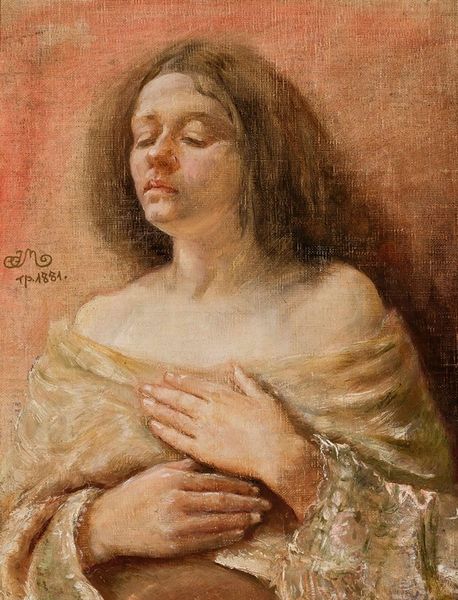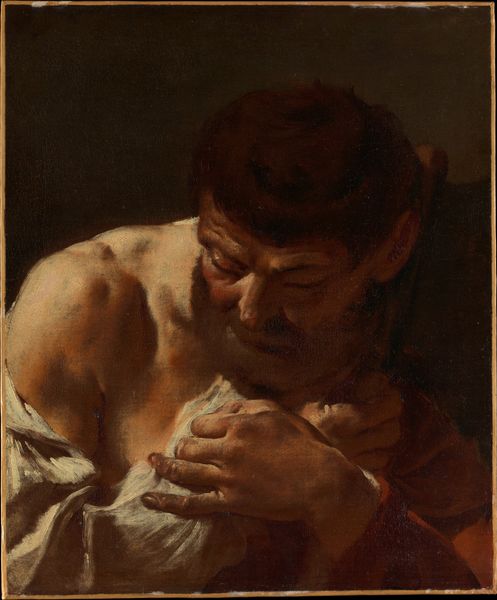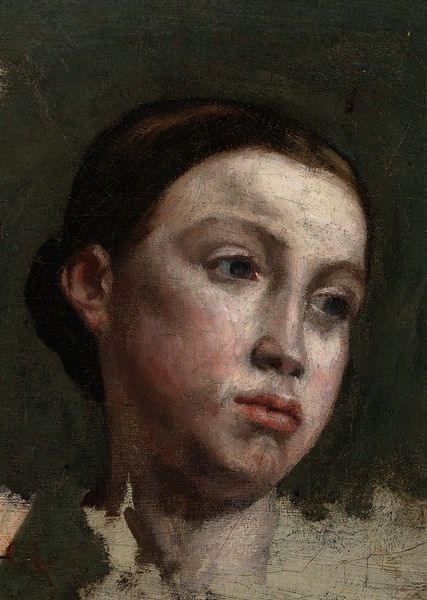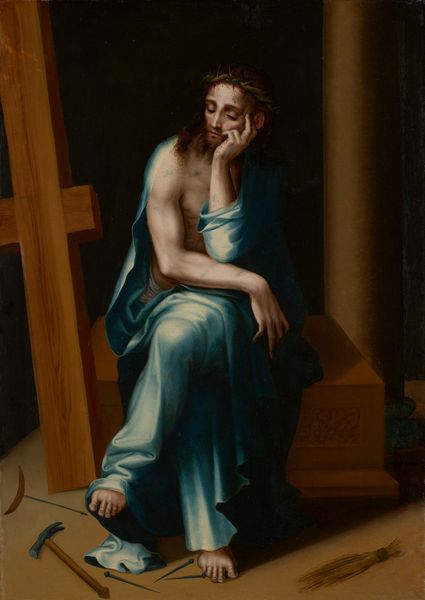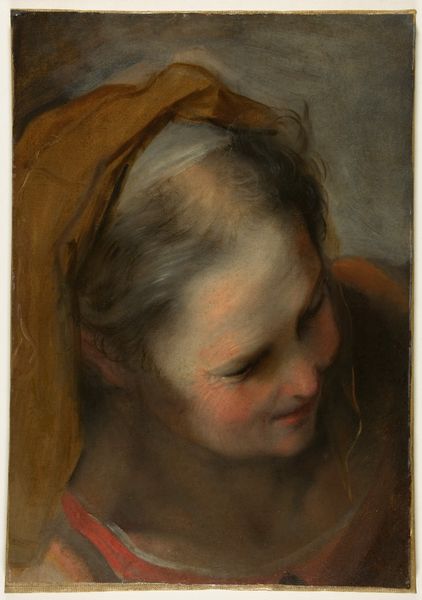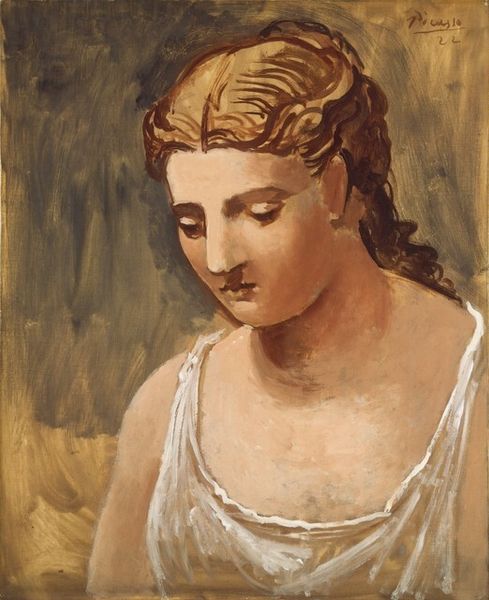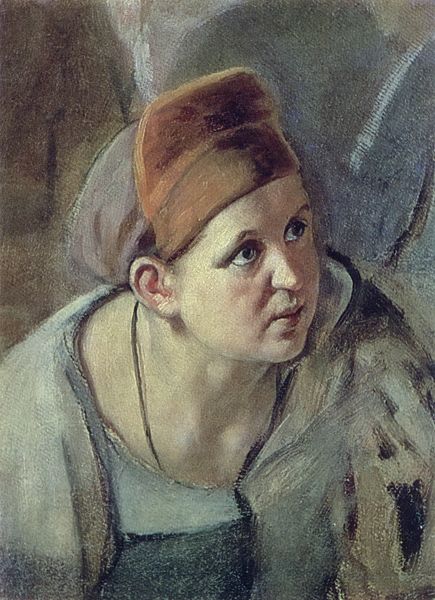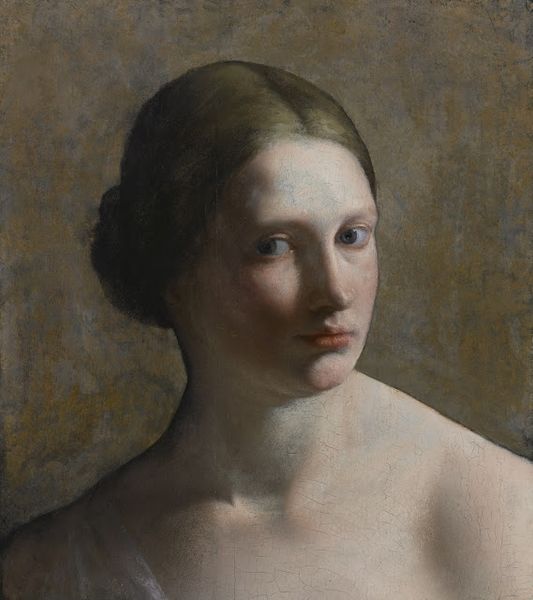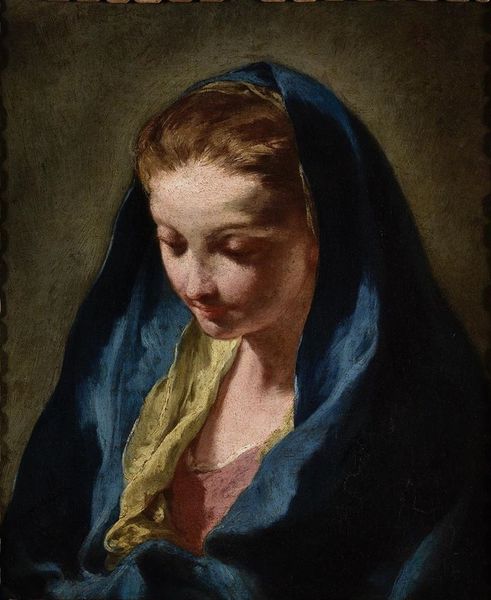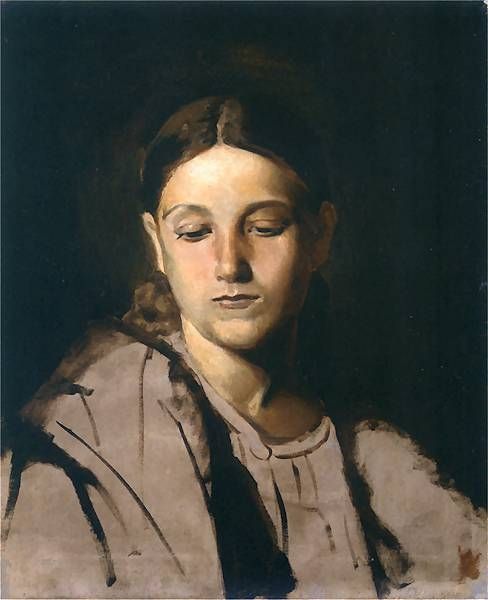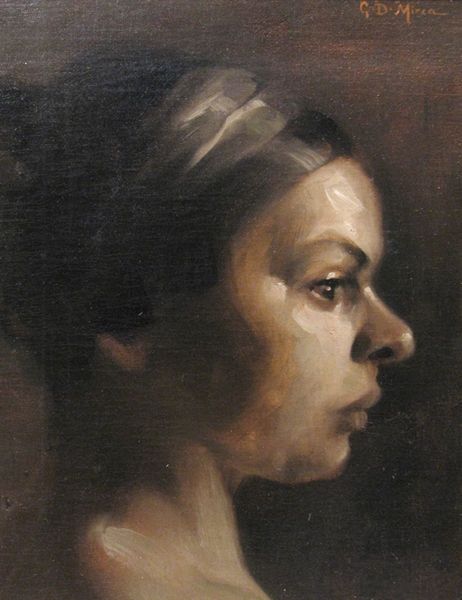
painting, oil-paint
#
portrait
#
cubism
#
portrait
#
painting
#
oil-paint
#
modernism
Copyright: Public domain US
Curator: Let’s consider Pablo Picasso’s "Woman’s head and hand," a striking oil on canvas created in 1921. The palette is quite restrained, lending a rather melancholic feel at first glance. Editor: Yes, the somber color choices certainly stand out, the ochres and muted browns create a sense of… weight. You immediately notice the simplified forms and heavy, almost sculptural treatment of the subject. Curator: I agree, there’s an emotional gravity here, amplified when viewed through the lens of early 20th century anxieties about female agency, societal upheaval and of course, personal tragedies affecting Picasso’s life during this period. Notice how the woman averts our gaze. This invokes themes of privacy, interiority and maybe even quiet resistance, no? Editor: Definitely a resistance implied, but what's really fascinating is the deliberate, almost brutal shaping of the woman's features. Her face appears built up with layers of thick paint. One might argue that in his process of adding and subtracting the medium, Picasso is enacting a sort of construction – not merely observation, but creating labor. Curator: That's an intriguing take. How do you relate the labor in the material back to potential social commentary? Editor: Well, if we consider the textile being clutched in her hand - presumably crafted, handled, and possibly symbolic of domestic labor. This piece blurs the lines between 'high art' and the everyday manual production. Picasso isn't simply representing womanhood, but gesturing at her embodied and very material existence. Curator: Precisely, thinking intersectionally about woman's position as being both subject of art and creator of commodity. It allows to ask more challenging questions, about power, gender roles and labor in general at that historical moment. Editor: Agreed, by emphasizing materiality of painting itself and by foregrounding manual creation in a painting of a women, Picasso is not simply representing her, but rather acknowledging a system of value that has been gendered through craft and materials. Curator: It leaves you thinking about who is empowered and disempowered by the painting production as much as what is happening on the canvas. Editor: Indeed, it makes the familiar new. Curator: Thank you, it has been eye-opening to reconsider those aspects of the work and how it continues to raise fundamental, uncomfortable and incredibly relevant social issues to this day.
Comments
No comments
Be the first to comment and join the conversation on the ultimate creative platform.
